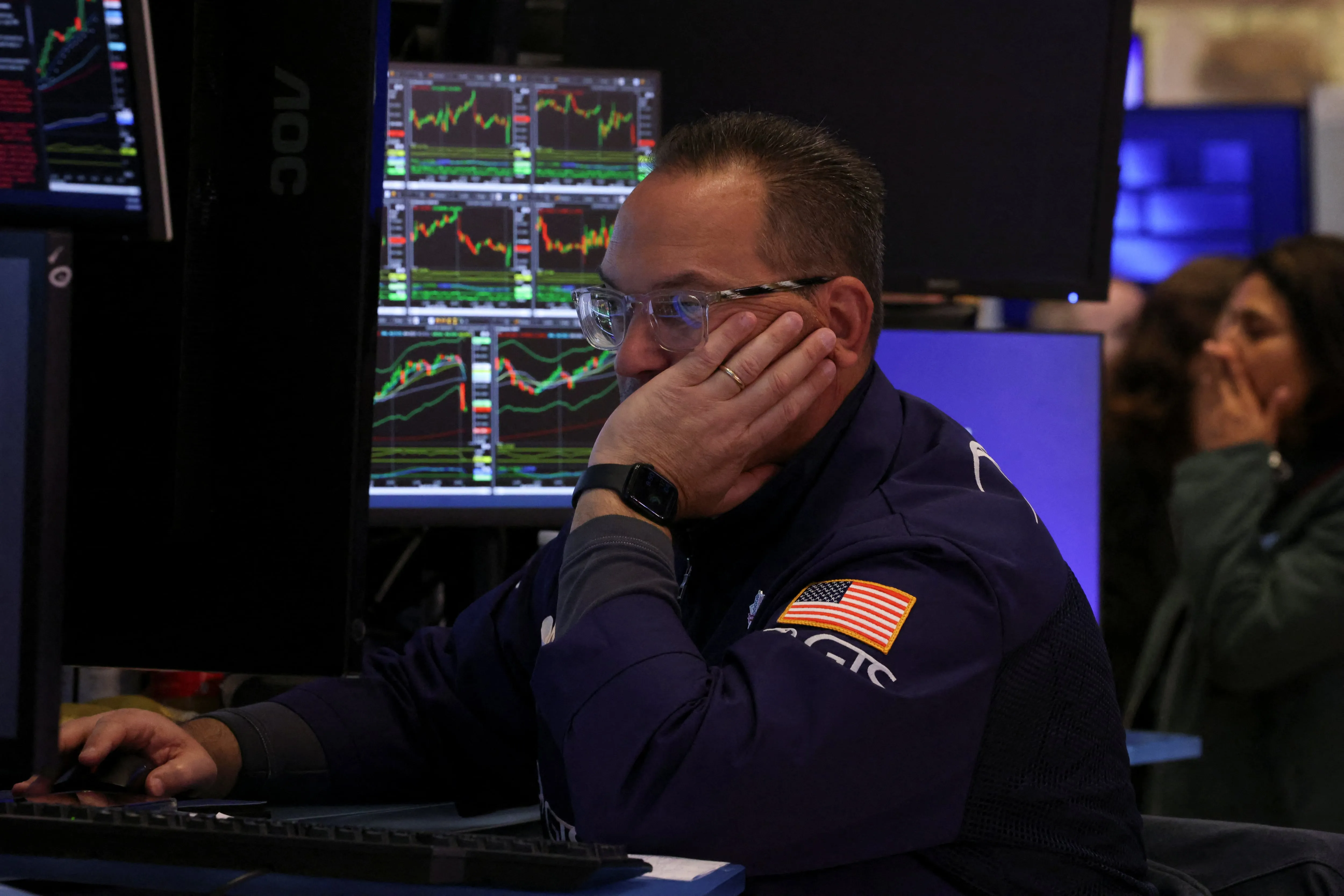Goldman Sachs Group Inc.’s trading desk suggests that the recent sharp selloff in high-flying momentum stocks might present a potential buying opportunity, based on historical trends.
The team highlighted that similar declines in Goldman’s High Beta Momentum basket have historically been followed by strong rebounds. Their analysis also factors in the current technical backdrop, which could support a near-term bounce.
According to a note sent to clients on Tuesday, when Goldman’s long-short momentum basket has fallen 10% or more over a five-day period in the past, it rebounded the following week 80% of the time. The median return during that recovery week was around 4.5%, with gains exceeding 11% over the next month.
The recent unwind of the momentum trade, which involves buying top-performing stocks while shorting laggards, began as stocks targeted for shorting staged a rally. However, the most recent losses came from weakness in the long side of the trade—especially those tied to the artificial intelligence (AI) theme, Goldman noted.
From August 6 through August 19, the High Beta Momentum basket slid 13% after recently flirting with record highs.
Goldman’s traders are watching technical indicators for signs the selloff might be nearing an end. The basket is now trading in oversold territory and approaching the lower end of its regression channel a key trendline support. Additionally, the index has dipped below its 200-day moving average, a widely watched level that often serves as major support for stocks.
“It could mark a good entry point for a historically rewarding factor, unless upcoming tech earnings trigger a prolonged AI-driven decline,” the note added. Nvidia Corp., the largest component of both the S&P 500 and Nasdaq 100, will announce its quarterly earnings on August 27 a report that could set the tone for the sector.
Among the hardest-hit names over the past three sessions were Palantir Technologies Inc., down 12%, and Advanced Micro Devices Inc. along with Super Micro Computer Inc., each sliding more than 6%. Nvidia’s decline was milder at 2.8%, but given its heavyweight status in key benchmarks, it exerted significant pressure on the broader market.
“These names were among the most crowded trades of the year, driven by AI enthusiasm and speculative momentum leaving them vulnerable to sharp reversals,” noted Chris Murphy, co-head of derivatives strategy at Susquehanna International Group.
The broader pullback in momentum stocks many of which are tied to AI comes amid growing concerns over lofty valuations, heavy positioning, and rising competition from China.
The Nasdaq 100 Index now trades at 27 times expected earnings for the next 12 months, nearly 33% above its historical average. Meanwhile, China’s recent warning to tech companies about using a specific Nvidia chip added another layer of uncertainty. Further pressure came after CoreWeave Inc., a major player in cloud computing, saw its stock plunge following its earnings miss.
Adding to investor anxiety, a new report from the Massachusetts Institute of Technology revealed that most generative AI projects intended to boost revenue are underperforming. In fact, only 5% of AI pilot programs are currently generating profits.
This latest slump marks the fourth time this year that Goldman’s High Beta Momentum basket has tumbled by more than 10%.
“The pattern we’re seeing in momentum reflects how this factor has traded throughout 2025 it’s been choppy and frustrating,” said Christopher Cain of Bloomberg Intelligence. “While this decline could represent a tactical buying opportunity, we also caution that high-momentum stocks remain among the priciest in history compared to their low-momentum counterparts.”
This sharp rotation underscores the risks inherent in chasing high-flying themes like AI, even as history suggests that steep selloffs often set the stage for quick rebounds.

Subscribe to our newsletter!
As a leading independent research provider, TradeAlgo keeps you connected from anywhere.








